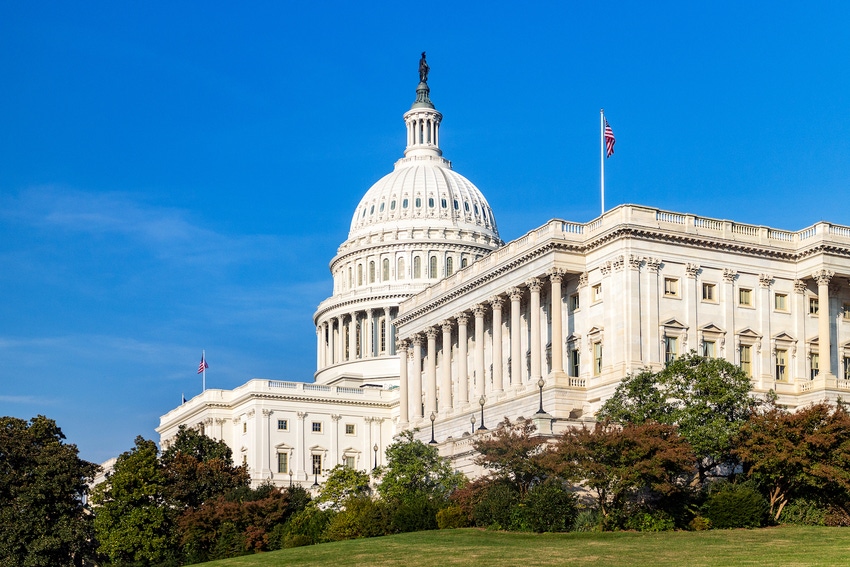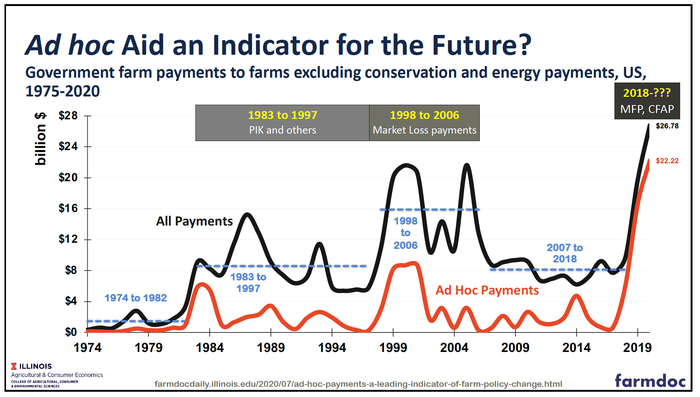
The importance of government payments to agricultural producers can be summarized in just one graphic from last week's "What's the Future? Attempting an Outlook of the Policy Landscape" webinar from the University of Illinois.
The graphic shows operator and land returns and cash rents from high-productivity farmland in central Illinois from 2000 to 2021(predicted). The data comes from producers enrolled in the state's farm business management program.

Since 2014, producers have reported breakeven returns once federal farm aid is incorporated, said Nick Paulson, associate professor in the University of Illinois Agricultural and Consumer Economics Department. The ad-hoc federal payments in 2018-19 and those expected in 2020 are creating a breakeven scenario. In the absence of those payments in 2021, returns will not be sufficient to cover land costs.
Ad-hoc payments have been a part of federal farm spending for decades. Ad-hoc payments spiked in the early to mid-1980s, before falling through the remainder of the decade and into 1990s before spiking again late in the 1990s through the early 2000s with Market Loss Payments. Ad-hoc payments have skyrocketed beginning in 2018.

While there have been eras of significant ad-hoc aid, Paulson said, and generally increased support built into farm bills immediately following, all eras are different. There's a lot of complexity in farm policy.
The Trump administration created the Market Facilitation Program in response to trade disruption and the Coronavirus Food Assistance Program was passed as part of the CARES Act in response to the COVID-19 pandemic, but what comes next is unknown as the administration and Congress are at a negotiating stalemate, said Jonathan Coppess, University of Illinois assistant professor in the Agricultural and Consumer Economics department.
The House passed the Health and Economic Recovery Omnibus Emergency Solutions, or HEROES, Act on May 15. The $3 trillion package backed by Democrats includes:
$1 trillion in assistance to state, local, tribal, and territorial governments;
$600 in supplemental unemployment insurance;
Funding for the U.S. Postal Service;
Increased SNAP funding;
$16.5 billion for direct payments;
A 45-cent per gallon renewable fuel reimbursement, and
A pilot soil health and income protection plan.
Senate Republicans and the Trump administration, on the other hand, are backing a smaller proposal. The $1 trillion proposal includes:
$200 in supplemental unemployment insurance;
Liability shields for employers, and
Increase CCC reimbursement by $20 billion.
There are indications that both sides have narrowed the overall spending spread, but the other hurdles to deal-making are unknown, Coppess said.
On the bright side, producers have been told they will receive 100% of their total CFAP payment beginning the week of Aug. 17. Prior to that date, producers with approved applications received 80% of their CFAP payments to be sure there was enough funding.
Click the download button below to download the handout from the webinar.
About the Author(s)
You May Also Like




